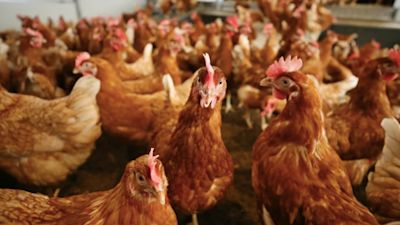China complains to UN after maneuvering its space station away from SpaceX Starlink satellites
The country claims it had two close calls
Share this storyAll sharing options
/cdn.vox-cdn.com/uploads/chorus_image/image/70324001/1234786226.0.jpg)
China filed a complaint this month with the United Nations, arguing that it had to conduct evasive maneuvers of its space station to avoid potential collisions with two of SpaceX’s internet-beaming Starlink satellites. The country is requesting that the UN’s Secretary General remind countries of their obligations under international space law, though China did not specify exactly what actions it wants to be taken.
In the complaint, dated December 6th, China details two instances on July 1st, 2020 and on October 21st, 2021 when the nation had to maneuver the core module of its space station, called Tianhe, out of the way of two separate Starlink satellites. The three Chinese astronauts currently living on Tianhe had just arrived to the station several days before the October maneuver.
China cited its responsibility to report the incidents to the UN due to its obligations under the Outer Space Treaty, an international agreement ratified in the 1960s that governs how countries should explore space. The Treaty offers up a set of loose guidelines and rules for countries to follow when launching spacecraft and people to space, such as prohibiting the placement of nuclear weapons in orbit and making the exploration of space a peaceful enterprise. The treaty also notes that participating countries are responsible under international law for all of the actions they take in space, including those by their commercial companies. And China apparently wants everyone reminded of that.
The complaint reads:
China wishes to request the Secretary-General of the United Nations to circulate the above-mentioned information to all States parties to the Outer Space Treaty and bring to their attention that, in accordance with article VI of the Treaty, “States Parties to the Treaty shall bear international responsibility for national activities in outer space, including the moon and other celestial bodies, whether such activities are carried on by governmental agencies or by non-governmental entities...”
Starlink is SpaceX’s ambitious internet-from-space initiative, which calls for launching nearly 12,000 satellites into low Earth orbit in order to beam broadband internet coverage to the ground below. So far, the company has launched more than 1,900 Starlink satellites, with nearly 1,800 still in orbit, according to satellite tracking.
As SpaceX continues to launch large crops of Starlink satellites into orbit, space trackers have raised concerns about how the spacecraft could make Earth orbit more crowded and raise the likelihood of collisions with satellites already in space. In fact, there have already been a couple of reports of satellites having to move out of the way of Starlink vehicles to avoid collisions. SpaceX claims that its Starlink satellites have their own autonomous collision avoidance software, which allows them to move out of the way on their own if the satellites suspect they may come close to another vehicle or piece of debris.
China says that its two avoidance maneuvers with Tianhe came after two Starlink satellites changed their altitudes in space. The first one in 2020 came after a Starlink satellite moved from its long-held orbit at 555 kilometers down to 382 kilometers. China claims the second Starlink satellite that caused trouble was “continuously maneuvering,” making it hard to know where it was headed. As a precaution in consideration of the astronauts on board, China opted to do a maneuver to avoid a collision. SpaceX did not respond to a request for comment.
This isn’t the first time that a space station has had to maneuver out of the way of a satellite or piece of debris. The International Space Station is consistently boosting its orbiting to avoid potential collisions with objects in space. In November, the astronauts on board the ISS had to shelter in place after Russia destroyed one of its own satellites in a nearby orbit, a show of strength known as an anti-satellite, or ASAT test. The test created thousands of pieces of debris that initially threatened the space station — and may continue to pose a threat to the ISS for years.
China is also responsible for some of the International Space Station’s collision avoidance maneuvers. In 2007, China destroyed one of its own satellites during an ASAT test, creating thousands of pieces of debris. Many of those pieces are still in orbit, and the ISS has periodically had to move out of the way to avoid these leftovers over the last decade. Now with its own space station in orbit, China is getting a taste of what that experience is like.















